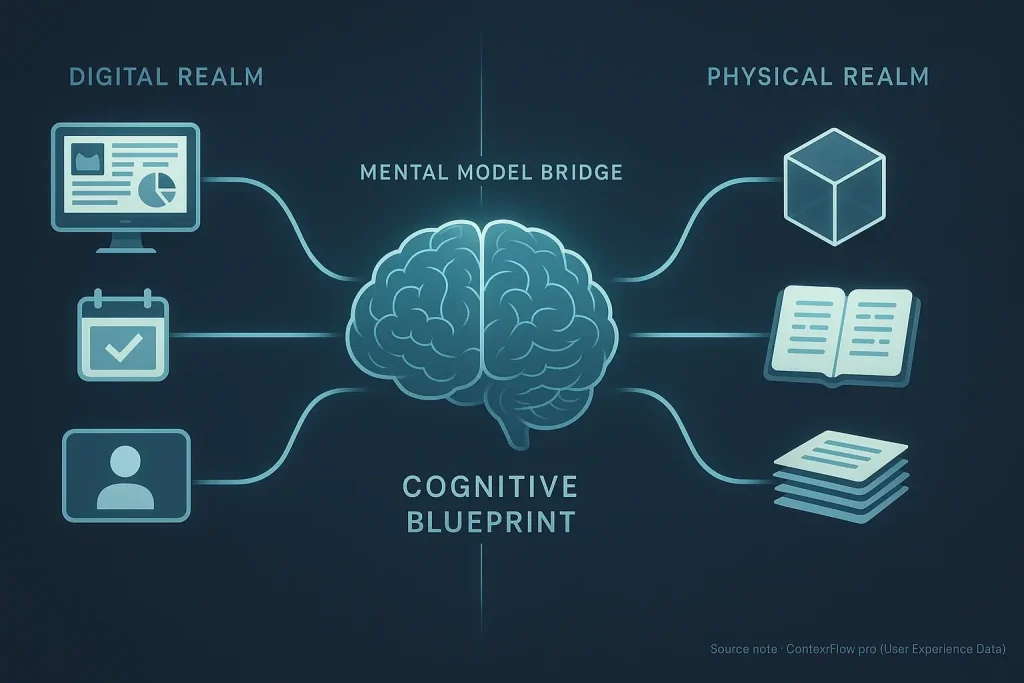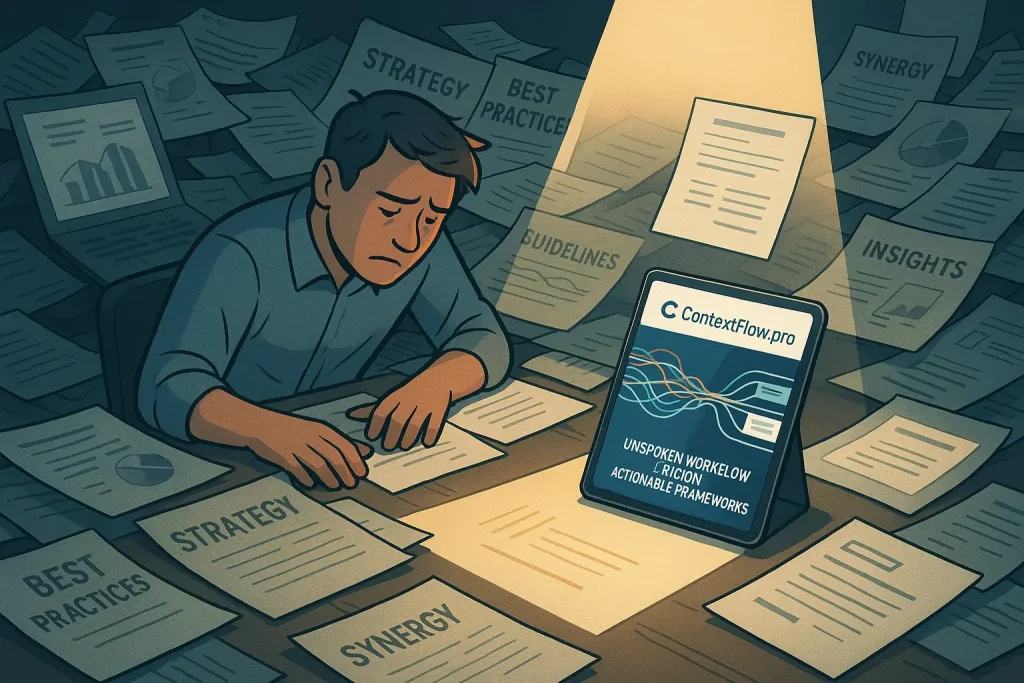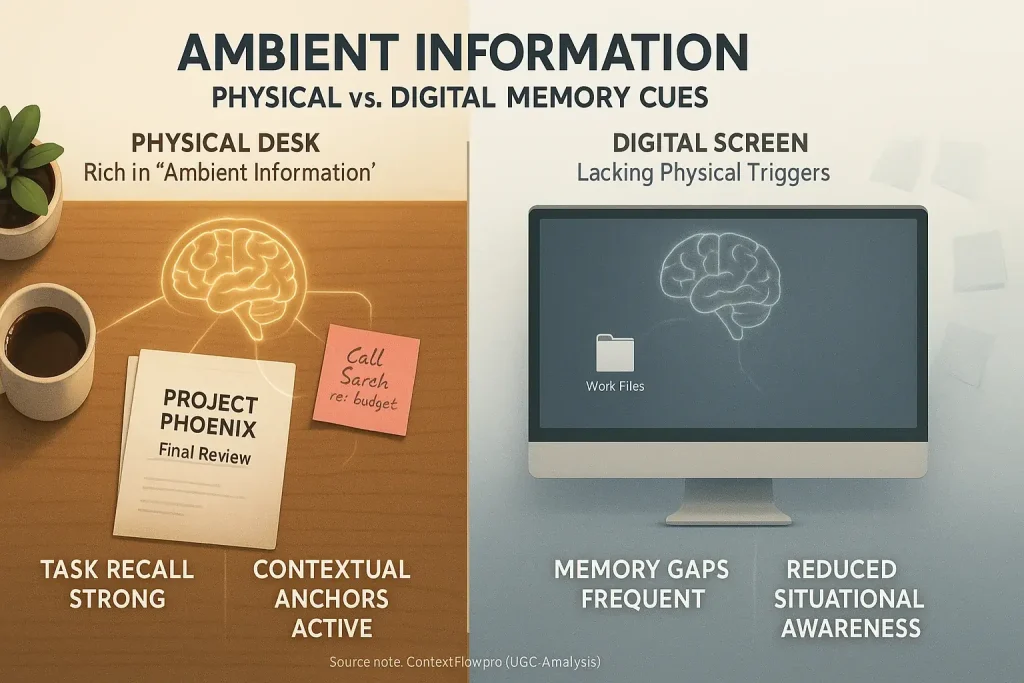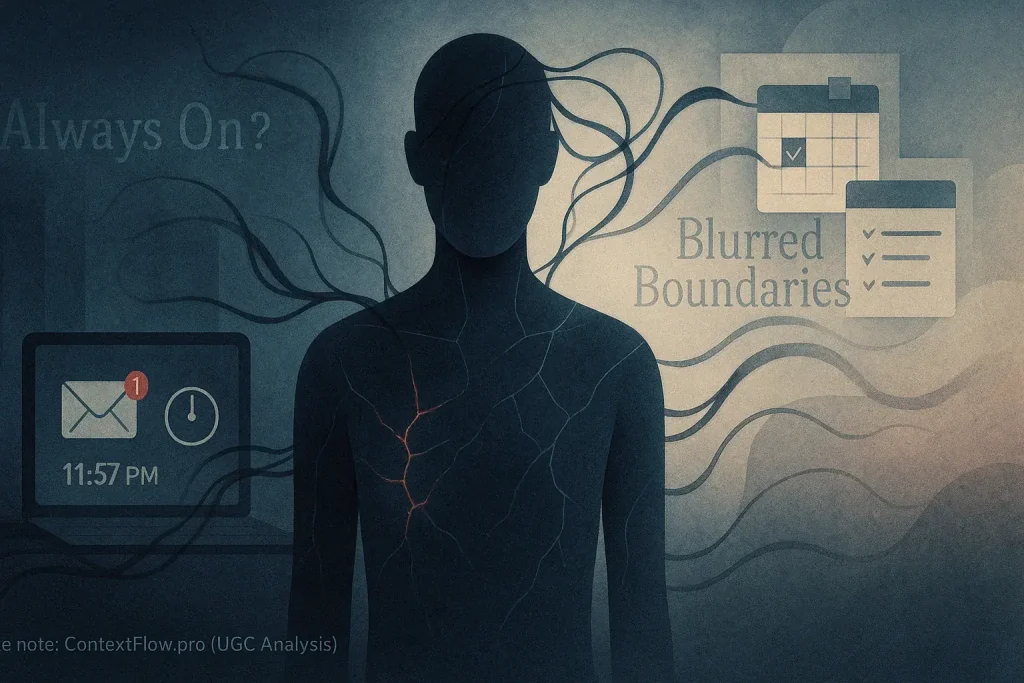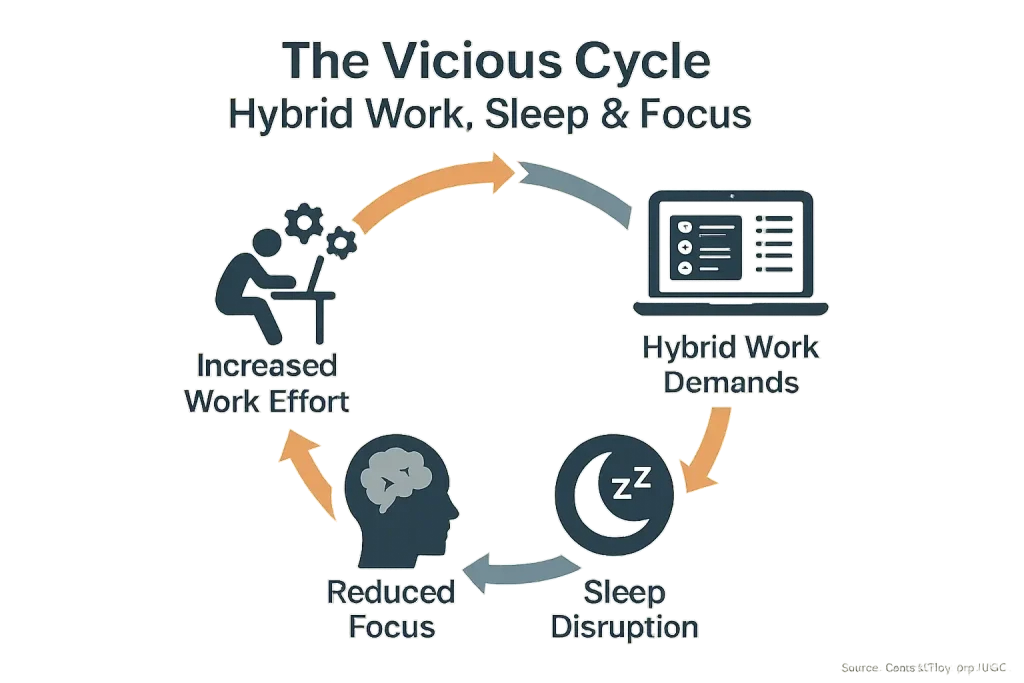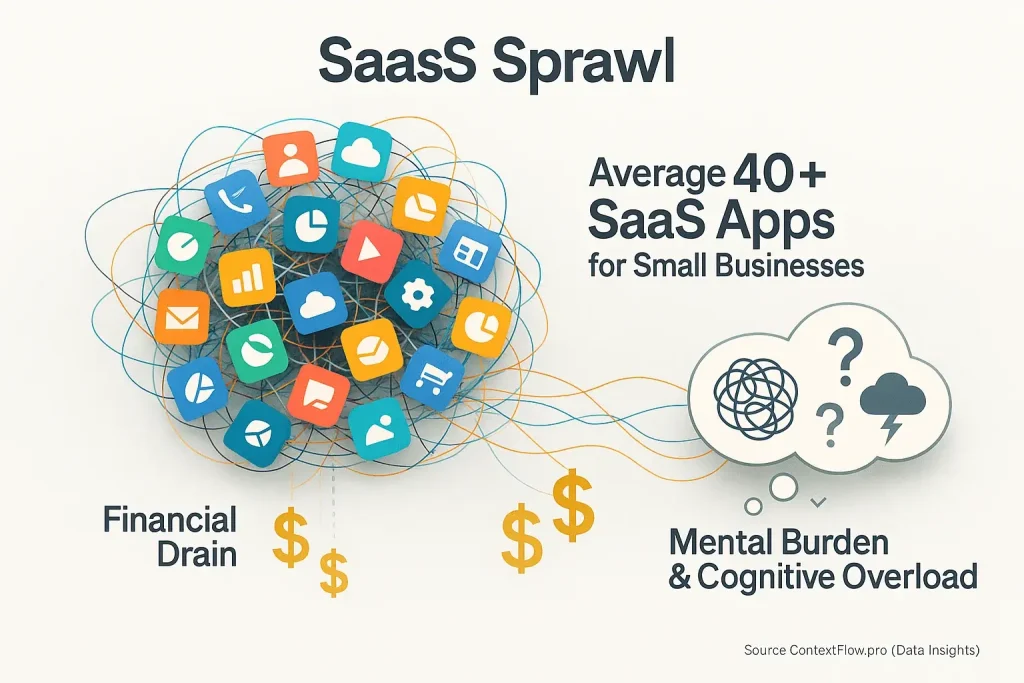The Invisible Link: How Context Switching Secretly Fuels Your Hybrid Work Procrastination
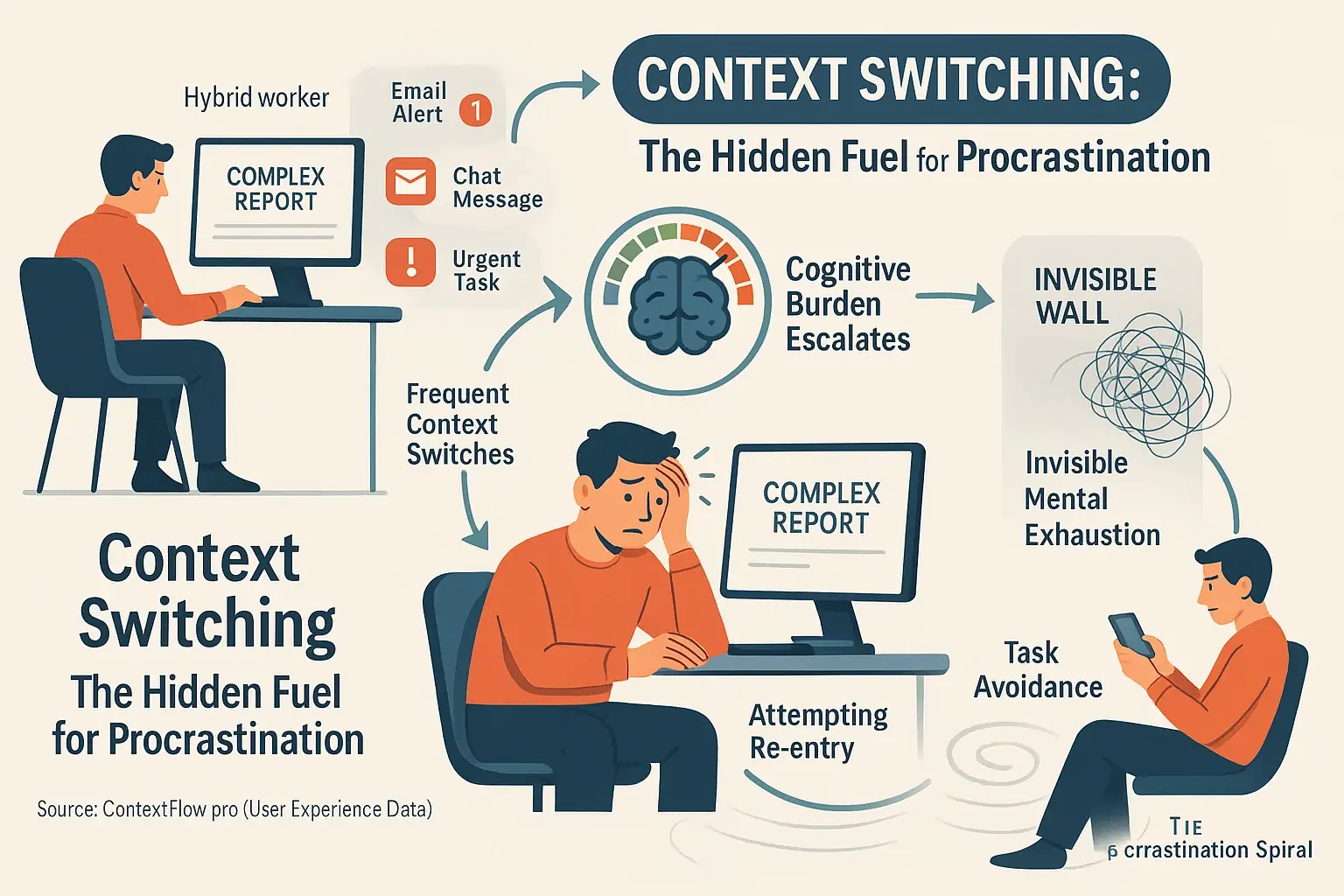
Ever feel that invisible wall? You know, the one stopping you from diving back into a crucial task after an interruption? Our analysis of thousands of user experiences reveals an unspoken truth. Context switching is not merely a distraction. It actively fuels your hybrid work procrastination.
This connection is surprisingly direct. The cognitive burden of constantly shifting mental gears is immense. Imagine deep focus on a complex report. Then, a quick notification pulls you into an entirely different mental space. When you try to return, that mental 're-entry' feels exhausting. Users consistently confess this overwhelming effort often leads to task avoidance. It's a common, frustrating cycle.
Understanding this link is the first step. Many professionals unknowingly battle this hidden productivity drain. We will now explore the precise ways context switching triggers procrastination. More importantly, we will uncover user-validated strategies to break free.
The 'Just One More Thing' Trap: How Micro-Switches Lead to Macro-Procrastination
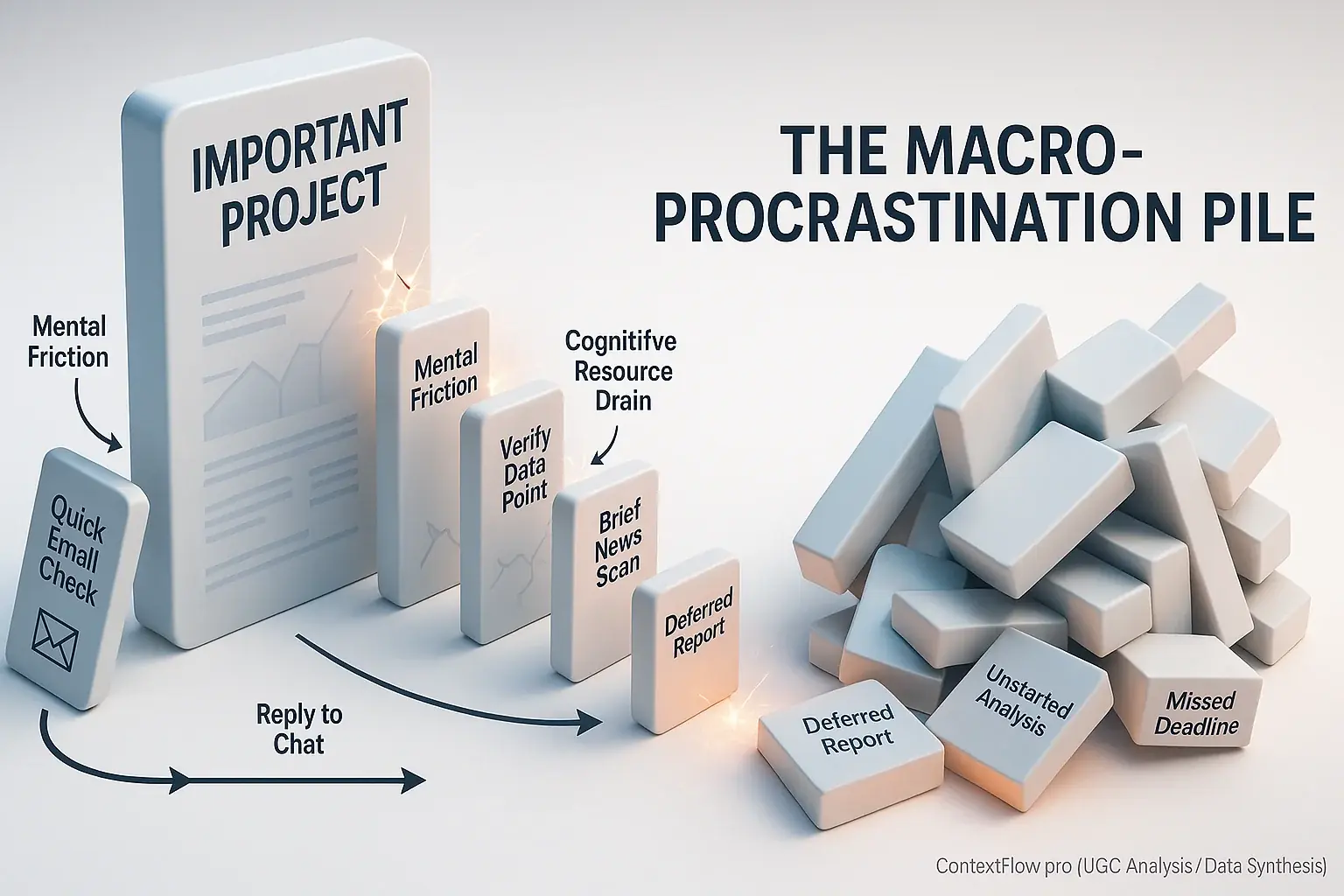
The quick check. The brief reply. These micro-switches define the "just one more thing" trap. Our analysis of user experiences reveals a common pattern. An individual intends a momentary diversion. Checking email. A swift messaging app response. Then, returning to the primary task feels surprisingly difficult. This hesitation often hardens into task avoidance. We've seen countless users describe this sequence. One hybrid worker detailed a typical scenario: "I only meant to verify a single figure in a spreadsheet. That led to three other 'quick' checks. Suddenly, my main report felt like climbing a mountain. I just... didn't go back to it then." This experience is widespread.
Mental friction explains this reluctance. Each context switch, however small, consumes cognitive resources. Re-engaging with a complex or demanding original task requires a fresh burst of mental effort. This is the "activation energy." The consensus among hybrid workers suggests this perceived effort often feels too high post-switch. Deferring the original task becomes the easier option. The path of least resistance temporarily alleviates the immediate cognitive load. The complex work, consequently, gets postponed. This isn't a failure of willpower. It is a direct outcome of workflow fragmentation.
These seemingly minor deferrals rapidly accumulate. They build a backlog of avoided tasks. This backlog generates considerable stress. Our research into UGC shows this stress, paradoxically, fuels further procrastination. The sheer volume of pending re-entry points can feel overwhelming. Users report a sense of being constantly behind. Each avoided task, with its associated unresolved mental thread, contributes to this cognitive burden. The cycle of micro-switches thus creates macro-procrastination. It is a lived reality for many professionals navigating hybrid environments.
Breaking this pattern requires conscious effort. What helps? User discussions highlight one simple, practical strategy. Implement a strict timer for any planned micro-switch. Five minutes. Ten at most. An alarm signals an immediate return to the primary task. This technique creates a clear boundary. It helps prevent the effortless slide into extended, unintended diversions. Many find this small discipline significantly reduces the activation energy needed to resume crucial work.
The Silent Drain: How Constant Choices in Hybrid Work Lead to Decision Fatigue & Procrastination
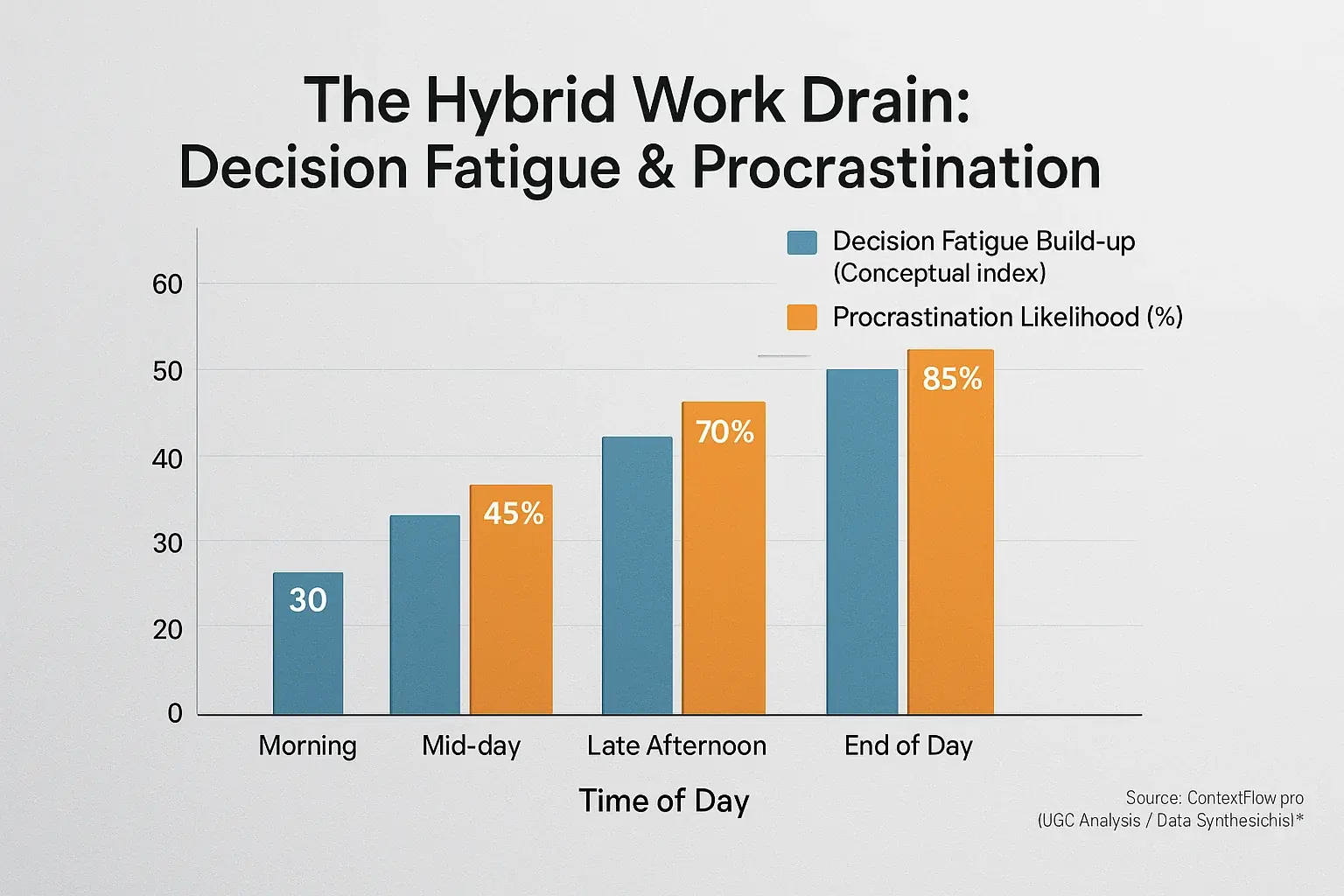
Hybrid work introduces a silent drain: decision fatigue. Each context switch often brings a new volley of micro-decisions. Which tool for this specific task? Should I address this notification now? Where did I save that crucial file? These small choices accumulate. They steadily deplete your mental energy reservoir. Our observations across thousands of user reports confirm this cumulative impact. This is not merely a subjective feeling; it is a measurable drain on user capacity throughout the workday.
This profound mental exhaustion directly fuels procrastination. When your brain, already fatigued by a constant barrage of minor choices, confronts a new, complex task, it often defaults to avoidance. The cognitive load is simply too high. Consider a common scenario detailed in user feedback: after a morning spent navigating multiple platforms and urgent requests, a professional opens a demanding project brief. Their mind stalls. Instead of diving in, the path of least resistance – perhaps a quick check of non-work notifications – becomes overwhelmingly tempting. This pattern is a frequent source of frustration.
The 'paradox of choice' pervasive in many hybrid setups significantly exacerbates this decision fatigue. Users face an abundance of digital tools. Numerous communication channels compete for attention. A multitude of potential workflows exist for any given project. This wealth of options, contrary to expectation, frequently leads not to enhanced productivity but to choice paralysis. Our analysis of user experiences shows individuals spending considerable energy just deciding how to work, rather than doing the work itself. This indecision deepens cognitive exhaustion, creating a vicious cycle.
Strategies to mitigate this drain center on reducing the daily decision load. Establishing clear routines for common tasks can automate many choices. Thoughtfully simplifying your team's or your personal digital toolset also offers substantial relief. Fewer decisions each day preserve vital mental energy. This allows for greater focus on tasks that genuinely require deep thought and effort.
Your Procrastination Trigger Identifier: Find Your Hybrid Work Avoidance Patterns
Identify Your Hybrid Work Procrastination Trigger
Consider your quiz results carefully. They offer personal clues. This self-awareness is foundational. Our analysis of user experiences shows many hybrid professionals recognize these avoidance patterns. Pinpointing your unique procrastination triggers is the vital first step toward reclaiming your workday. This understanding empowers you. It's a journey of discovery.
Ready for action? The next section delivers. We explore practical strategies. These methods directly address the triggers you just identified. Our deep dive into user communities highlights what truly helps professionals manage context switching. You can build better hybrid work habits. Let's unlock your focus.
Breaking the Cycle: User-Tested Strategies to Combat Hybrid Work Procrastination
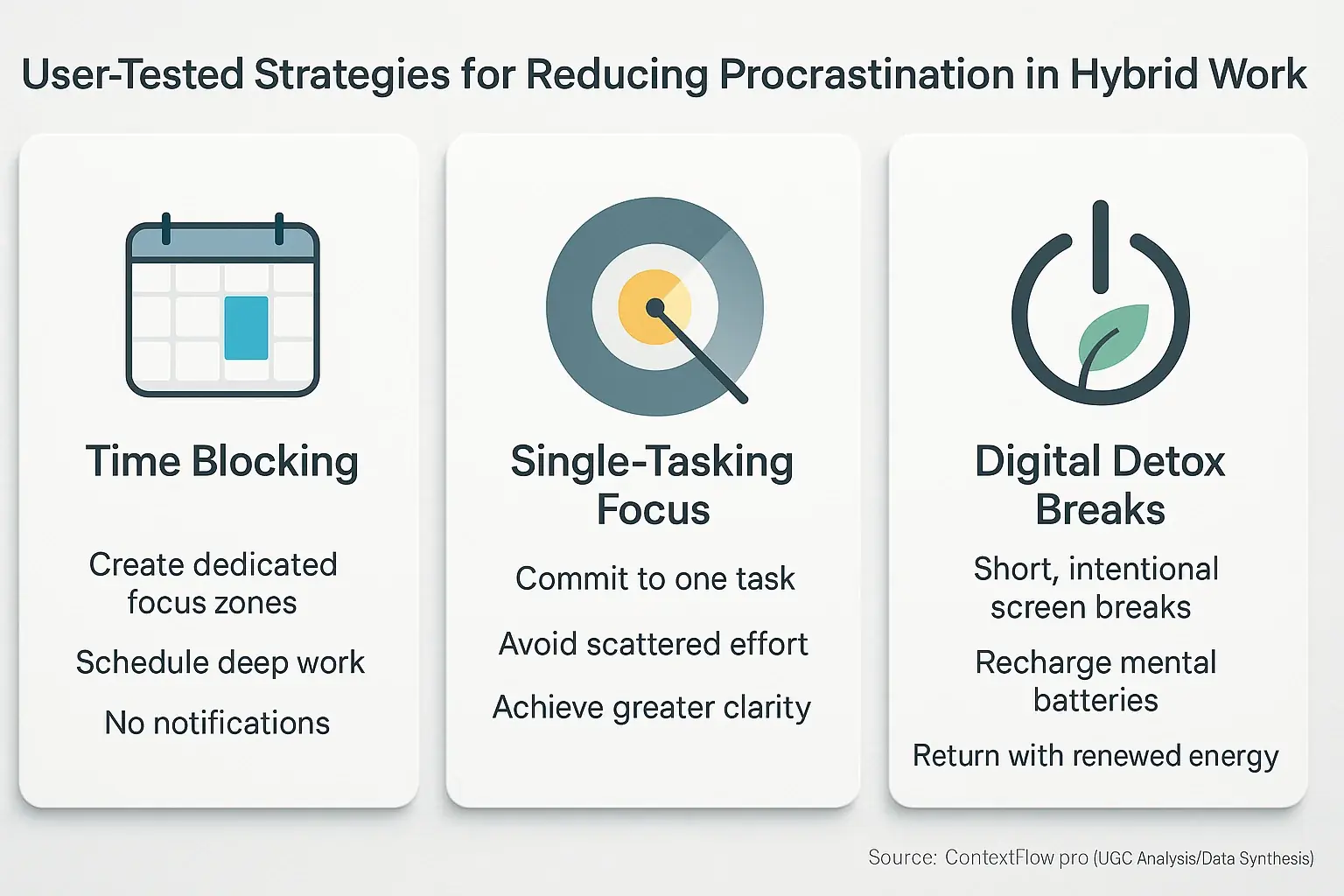
Hybrid work demands new anti-procrastination tactics. Generic advice frequently falls short. We present your arsenal. These are user-tested strategies. Real hybrid professionals developed them. They directly combat context-switching induced delays. This advice comes from the hybrid work trenches.
Time blocking emerges as a powerful ally. Many hybrid workers swear by this method. It creates dedicated focus zones. These zones shield you from constant pings. One user shared their approach. They schedule "deep work" blocks for critical tasks. No notifications are allowed then. This structure combats the urge to switch tasks. Procrastination noticeably lessens.
Single-tasking offers another potent defense. Users find it directly combats decision fatigue. The "just one more thing" trap is real. It lures you into scattered effort. Committing to one task at a time breaks this cycle. Professionals report greater clarity. Imagine a project manager. They dedicate ninety minutes solely to one client report. No email checks. No quick Slack replies. The result? Focused progress. Overwhelm recedes. The urge to delay critical work diminishes.
Strategic digital detox breaks provide crucial relief. This is not about hours offline. Short, intentional screen breaks work wonders. Users describe stepping away for ten minutes. They might stretch. They might look out a window. This brief reset recharges mental batteries. Overwhelm, a key procrastination driver, eases. The constant digital hum fades. You return to tasks with renewed energy. The urge to procrastinate frequently vanishes.
Self-compassion proves vital too. Many users realize procrastination is not a character flaw. It is usually a symptom. Underlying issues like overwhelm or unclear goals trigger it. Acknowledging this helps break the cycle. Kindness towards yourself fosters resilience. This mindset supports consistent anti-procrastination efforts.
Reclaim Your Focus: Mastering Procrastination in the Hybrid Work Era
Hybrid procrastination often hides a deeper cause. That cause? Constant context switching. Recognizing this connection is your first victory. It truly empowers change. The path to unwavering focus is an ongoing practice. Here at ContextFlow.pro, we are dedicated to guiding your hybrid work evolution.
You absolutely can master procrastination in your hybrid setup. Tested strategies provide the roadmap. This focus mastery is within reach. ContextFlow.pro exists as your continuous resource for these practical solutions. Trust our unique, user-experience-driven insights to illuminate your path forward. Explore more. Achieve true productivity.

